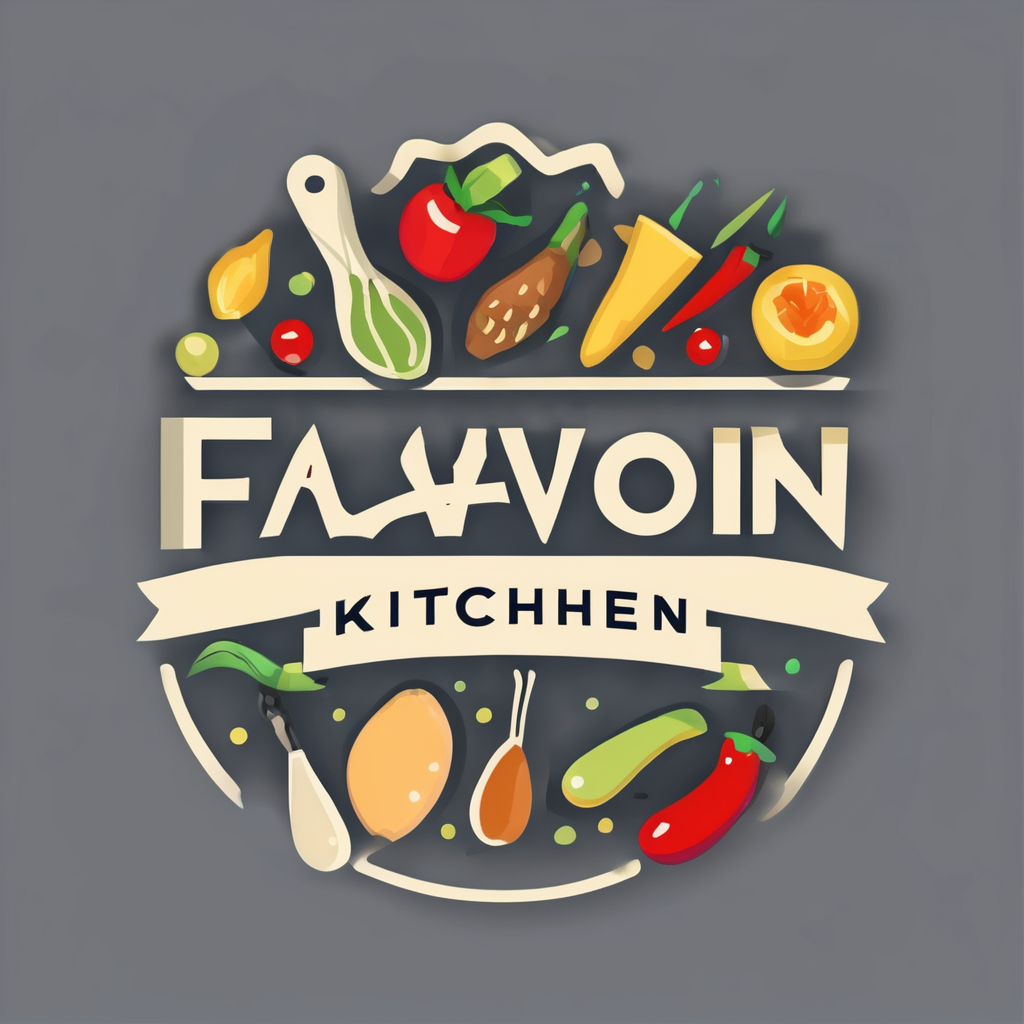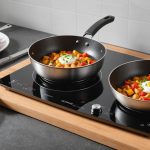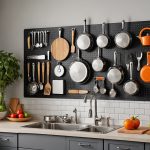Overview of Induction Cooktops
Induction cooktops are a revolutionary cooking technology that has reshaped the landscape of modern appliances. Unlike traditional gas or electric cooktops, induction models utilise electromagnetic fields to produce heat. This method allows for a direct transfer of energy to the saucepan, making the cooking process incredibly efficient.
The concept of induction cooking emerged in the early 20th century with experiments that involved high-frequency currents. However, it wasn’t until the late 1980s that induction cooktops gained commercial popularity, with advanced models entering the home kitchen market. This was primarily due to technological improvements that made the equipment more reliable and cost-effective.
Also read : Maximizing your fridge: discover the keys to healthier eating and successful weight control
Key features that differentiate induction cooktops from conventional methods include faster cooking times and enhanced control over temperature settings. As the heat is generated directly within the pan, the cooktop surface remains relatively cool, significantly reducing the risk of burns and accidents. This characteristic not only makes induction cooktops safer but also easier to maintain.
Furthermore, the sleek design of these appliances complements any modern kitchen, offering aesthetic appeal without compromising functionality. The growing demand for induction cooktops reflects a shift towards more sustainable and efficient cooking practices embraced by a growing number of households.
In parallel : Revamp your kitchen: maximize storage and inspire healthy cooking with an innovative pegboard system
Energy Efficiency of Induction Cooktops
Induction cooktops are renowned for their energy savings, setting them apart from traditional cooking methods. Unlike their gas and electric counterparts, induction technology minimises heat loss by directly transferring energy into the cookware. This efficiency translates to significantly reduced energy consumption. While gas and electric cooktops often waste energy by heating the surrounding air and cooktop surface, induction systems focus heat specifically where it’s needed, on the pan itself, leading to more efficient cooking.
When comparing energy consumption, induction cooktops typically use about 60-70% less energy than conventional electric and gas models. This efficient cooking capability can lead to potential cost savings on energy bills over time, making them an appealing choice for eco-conscious households. However, the initial investment in induction cooktops and compatible cookware can be a consideration, although the long-term savings often offset these costs.
The environmental benefits of reduced energy demands also contribute to their appeal, offering a greener alternative for those seeking sustainable kitchen solutions. Understanding these advantages can greatly assist potential buyers in making informed decisions, favouring energy-efficient choices with long-term benefits both economically and environmentally.
Health Advantages of Induction Cooking
Induction cooking offers significant health benefits compared to traditional gas and electric methods. A primary advantage is the reduction of exposure to harmful EMF (electromagnetic fields). Unlike gas stoves that emit pollutants and electric stoves that produce higher EMF levels, induction cooktops generate minimal emissions, thus enhancing the cooking environment’s safety.
Additionally, induction cooktops allow for cooking at precise temperatures, which can improve meal quality. Precise temperature control ensures that foods are not overcooked, preserving essential nutrients. This capability is especially beneficial for those who follow specific dietary guidelines or aim to maintain a healthy lifestyle.
Safety is another compelling benefit of induction technology. The cooking surface temperature remains cool to the touch due to heat generation within the cookware rather than on the cooktop itself. This feature significantly reduces burn risks and enhances kitchen safety, particularly in households with children.
Moreover, culinary enthusiasts appreciate the speed and precision of induction cooking, which can positively affect the nutritional quality of prepared meals. The reduced cooking time and stable heat distribution contribute to maintaining the integrity of ingredients, making induction cooking a healthy choice for both home chefs and health-conscious individuals.
User Experience with Induction Cooktops
Induction cooktops redefine the cooking ease and efficiency cherished by users. Many testimonials celebrate the intuitive interface and modern design, highlighting how these appliances enhance daily culinary tasks. Users often recount how quickly they adapted to the precision controls, allowing them to cook meals at precise temperatures effortlessly. This precise temperature control not only streamlines cooking but also ensures better meal quality, attracting users seeking enhanced culinary performance.
Cleaning and maintenance are frequently praised as advantages of induction cooktops. The smooth, flat surface makes spills and splatters easy to wipe away—a stark contrast to the intricate grates and burners of traditional stoves. This ease of cleaning adds to the overall customer satisfaction, as maintaining a neat cooking environment becomes less demanding.
Despite these advantages, some users face challenges such as adapting to induction-specific cookware. This initial hurdle is easily overcome with guides on selecting suitable cookware, ensuring a seamless transition to induction cooking.
Overall, users report high satisfaction levels, appreciating how induction technology elevates their cooking experience while providing safety and efficiency. Engaging with user experiences offers insightful perspectives, helping potential buyers make informed decisions about adopting this innovative cooking technology.
Induction Cookware Requirements
To fully harness the benefits of induction cooktops, choosing the right induction-compatible cookware is crucial. But what makes cookware suitable for induction? The secret lies in the material. Induction cooking relies on electromagnetic fields, so only cookware with a magnetic base can be used. This means your pots and pans must be made from, or feature, ferrous metals like cast iron or some stainless steels.
It’s not just about grabbing any metal pan. Not all metals work. Aluminium or copper cookware, for example, need a magnetic stainless steel layer to function. Understanding the cookware types compatible with induction is key. Glass, aluminium, and copper need induction plates to function properly.
Here are some quick tips for selecting the right cookware:
- Use a magnet to test for compatibility. If a magnet sticks firmly to the base, it’s likely suitable for induction.
- Opt for flat-bottomed cookware for optimal contact and heat distribution.
- Consider investing in a variety set to cover different cooking needs.
By focusing on these considerations, you can ensure a seamless cooking experience and maximise the efficiency and performance of your induction cooktop.
Comparing Induction with Traditional Cooking Methods
Embarking on a cooking comparison between induction and traditional methods reveals intriguing insights. Induction cooktops stand distinct from gas and electric counterparts, mainly due to their reliance on electromagnetic fields. This technology ensures a rapid heat-up time, surpassing both gas and electric in cooking speed, providing a seamless cooking experience. Traditional methods, while reliable, often lag in efficiency, wasting more energy as heat dissipates into the surrounding environment.
Pros of induction cooking include quick heating, energy efficiency, and safer cooking due to the cool cooktop surface. Conversely, traditional gas and electric cooktops benefit from being more universally compatible with various cookware and lower initial cost. However, they lack the precise temperature control of induction.
For users determining the right fit for their kitchen, consider the efficient cooking and safety of induction against the familiarity and broader cookware compatibility of traditional methods. Weighing these pros and cons can guide informed decisions, ultimately enhancing one’s culinary practices. By comparing various cooking technologies, households can better align their kitchen choices with personal cooking styles and efficiency priorities, providing an enriching kitchen experience.
Visuals and Demonstrations
Understanding induction cooking can be greatly enhanced through engaging visuals and demonstrations. These tools offer clarity and illustrate the nuances of using induction cooktops effectively. Video tutorials online frequently provide step-by-step instructions, guiding users through the setup, usage, and maintenance of these modern appliances. Platforms such as YouTube abound with such resources, showcasing everything from basic cooking techniques to advanced recipes and troubleshooting tips.
Instructional videos are particularly beneficial for visual learners, making the transition to this technology smoother. They allow users to see firsthand how quickly and efficiently induction cooktops operate compared to traditional methods. Similarly, infographics can distill complex comparisons into easily digestible insights, emphasising energy savings and health advantages visually.
Moreover, demonstrations conducted by experts frequently highlight the key distinctions and benefits, such as rapid heating and safety features, helping users make informed decisions. Engaging with these visual aids not only demystifies the cooking technology but also builds confidence for potential buyers exploring this appliance for their homes. By leveraging these educational resources, individuals can enhance their culinary skills and optimise their kitchen environment.
Conclusion and Final Thoughts
Reflecting on the journey through the world of induction cooktops, it becomes evident that these modern appliances are not just a trend but a significant step forward in cooking technology. They bring forth a plethora of advantages, ranging from their efficient energy use to the safety and health benefits they offer. This has undoubtedly positioned them as worthy contenders in the realm of modern appliances.
For those contemplating a switch, induction cooking represents more than just a culinary upgrade; it’s an investment in a cleaner, safer, and more energy-efficient kitchen environment. By effectively minimizing heat loss and offering precise temperature control, induction cooktops enhance both the cooking process and meal quality. This precision allows cooks to explore new culinary possibilities and ensure healthier meal preparations, aligning perfectly with today’s lifestyle that values both efficiency and health.
Considering these compelling benefits, future kitchen designs will likely see a growing integration of induction technology. As more households embrace this change, the kitchen becomes not just a place for preparing meals, but a hub of innovation and modernity. Engage with induction cooking now and be part of this exciting technological shift.











